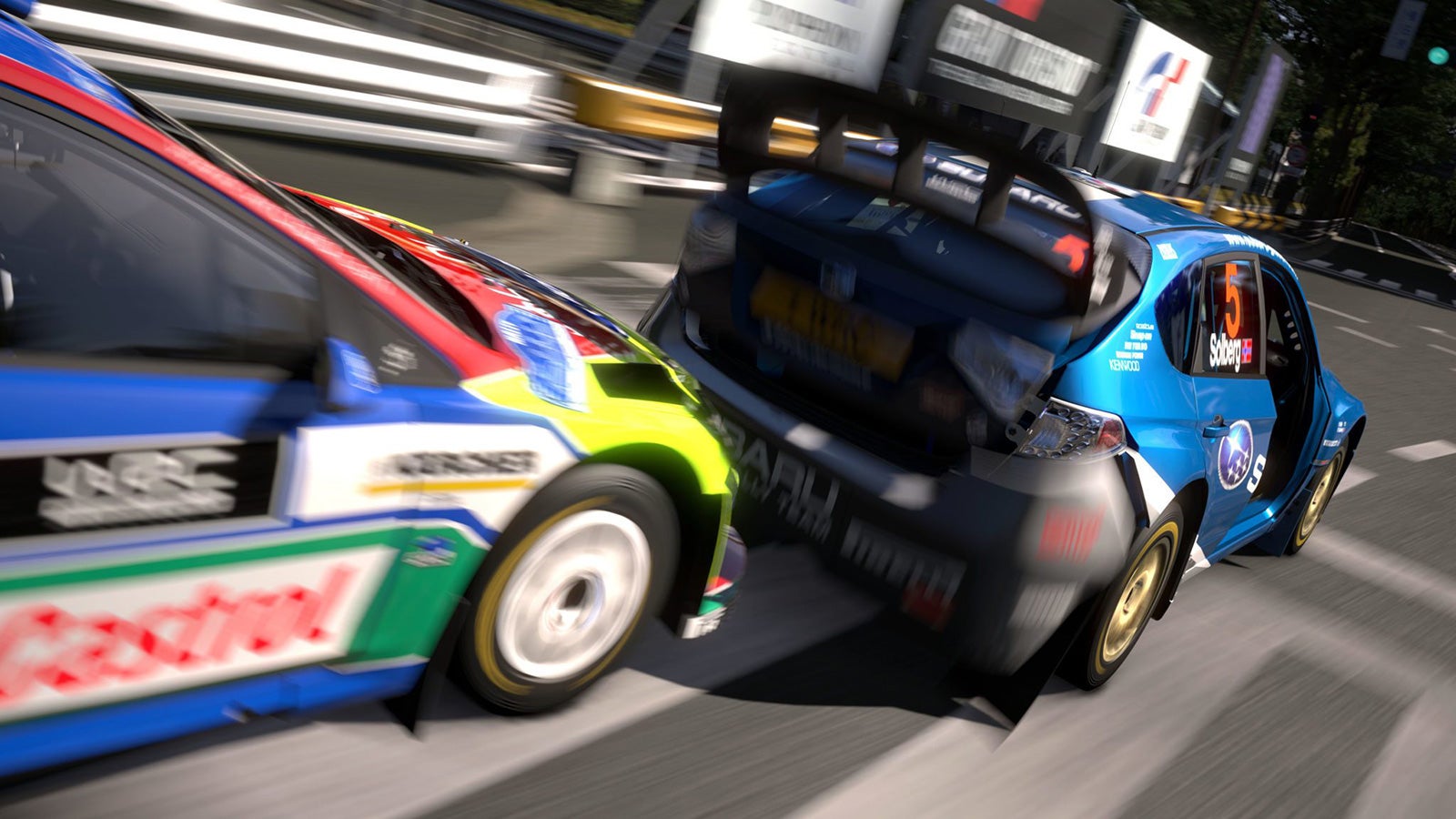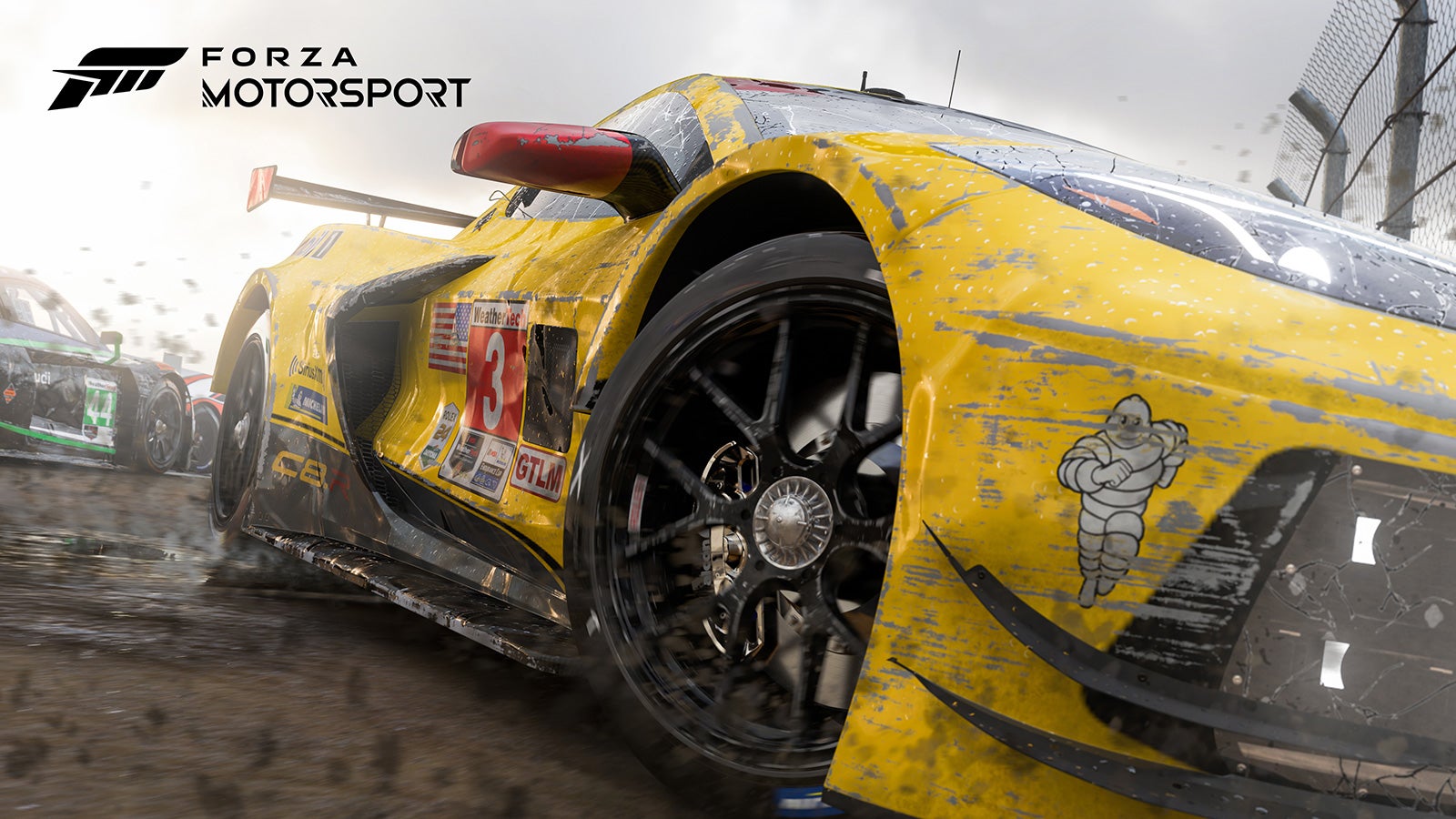“We all know racing games claim to be real,” former NASCAR driver Jason Jarrett once said in a commercial for the PlayStation game bearing his name. The TV ad for 2000’s Jarrett & Labonte Stock Car Racing staged two Audi A4 touring cars side by side — one representing how cars get banged up in Jarrett’s game, and another demonstrating how they decidedly don’t in “other games” that shall not be named (read: Gran Turismo). As Jarrett, Justin Labonte and their nameless, goggled accomplices heave hell on their helpless German sedans, the announcer belabors the point for the folks at home: “Now this is real damage.”
For years, marketers and critics pushed a sense that the most important aspect of any game involving cars was the player’s ability to destroy them. By the early 2000s, gaming hardware had finally matured to the point where conveying realistic, real-time wreckage was possible, and even holdouts like Gran Turismo eventually came around. But if you’ve been paying attention — as some of our commenters have — you may have noticed the degree of damage bestowed on licensed cars in racing games has largely regressed, not advanced, over the past decade.
I wanted to know why. So I sought out a developer at a major gaming studio, with decades of experience building racing games, for some answers. I’m only going to refer to this person as Anonymous Game Developer, because companies — gaming and automotive alike — don’t typically appreciate when people talk about this stuff. This interview has been lightly edited for clarity.
Adam Ismail: Some games today are better than others, but generally speaking, why don’t cars get as beat-up as they used to in racing games?
Anonymous Game Developer: I think because so many companies have different rules about what can and can’t be done on their cars. You get a situation where you have two different vehicles by two different car manufacturers in the same game, and they have to have different damage levels. Say “Car A” can get all beat up and smashed up, whereas “Car B” can only be damaged a little bit. I’ve worked on games where you have that situation, and it looks inconsistent. So, what happens now is, I think everyone gets reduced down to the “B” level, where damage is less prevalent on cars.
And I think racing games are now in a situation where you have open-world racing games or you have simulation racing games, like Gran Turismo or Assetto Corsa Competizione or whatever. ACC has more damage, because that’s more about the simulation level of things — it’s more a part of the game. Whereas open-world racing games — I guess, say for example Forza Horizon — it’s not as important in that game. Not a lot is put into it, I don’t think, because it’s not as important to the game.
AI: I think about the games from, say, 15 years ago. In the 2000s, you saw damage prioritised in games like Dirt and Grid. Even the original Forza Motorsport’s damage, if you look back, was way heavier back then than it has been in recent years. Do you think that’s down to changing automaker attitudes? Are they more restrictive about this stuff than they used to be?
GD: I think they are, because gaming is much bigger than it was back then. So there’s more eyes on the cars, and more people see them. Also, I guess as the fidelity of the games has gotten much higher, the cars look much more realistic, so [damage] is more easily recognisable. That’s definitely part of it as well.
AI: Obviously, automaker feelings have a lot to do with it. But is there anything holding things back on the development side? Has damage been deemed less of a priority now than it used to be? I remember Gran Turismo used to be ridiculed by everybody for being supposedly the most realistic car game, but not doing damage. You don’t really hear that anymore. So is it challenging from a development perspective too, or is it just, these are the realities of the industry, and publishers are just trying to steer the conversation away from damage?
GD: It is a lot of work to do the damage — it’s a significant amount of work. And there’s additional approval processes, because you have to send how the damage model looks to the manufacturer, so they can approve it. So it goes all through that. And I guess, [publishers] probably look to games like Gran Turismo and said “hey, they never really had damage and it didn’t affect their sales.” I think that’s definitely part of it too — GT’s lack of damage over the years. Obviously they have it a little bit now, but that was definitely part of it becoming less important.
AI: In your experience, what specific kinds of damage have automakers drawn the line at? I feel like I don’t see as much glass breaking in racing games anymore.
GD: [T]hey’re very, very specific that the roof can never be damaged. That’s the main thing, the driver cell always has to be completely safe. That can never be part of it. But the rest of it, some companies are absolutely fine with, like, wheels coming off. Although the angle of wheels can be interesting and wheels actually detaching from the car can be a no-no for some manufacturers as well.
AI: You mentioned earlier how you almost have to play to the weakest link — that you might have seven manufacturers that are ok with a certain level of damage, and then one or two come in and don’t sign off. Is that often an issue, taking what might be this great, high-tech damage model and curtailing it to please some of the licensees?
GD: I’ve worked on some games where we’ve had feedback where people noticed that it’s inconsistent between [cars]. Obviously we balanced it so that […] mechanically, an impact still causes [the same] mechanical damage. But visually it looks different. And it does cause issues, because you can notice that some cars just don’t get as battered up as others. And it just looks odd that you’ve got this car, you’re driving around, and it looks generally ok. But another vehicle with the same impact looks completely smashed up, as you’d expect it to be.
It was when we started to get feedback from the community that things looked inconsistent [that it became an issue]. And they question it, and you can’t tell them why!
AI: You don’t see terminal damage happen a lot either. Is that more down to game design decisions? Like, it’s not as fun for the player if cars get too easily immobilised?
GD: I’ve only ever known one manufacturer have an issue with a terminal damage state on a vehicle, where the car is basically not drivable anymore. But generally that’s probably a game design thing [….] It is a frustration in a game when that happens. So, the car will become damaged to a certain point but it’s still drivable around the track and you can complete the event.

AI: Do you have any stories about working on a game where a manufacturer had a very strange complaint or demand?
GD: Not with damage. More so with customisation, to be perfectly honest. Like a livery design, where you had companies not liking certain designs or shapes on the side of the car. Not specifically damage, actually. Only rules, kind of, from the outset that we knew about.
We found ourselves scoping damage down to either be even [between makes] or, I guess in some games, nonexistent, because it’s less [important]. Like you’re saying, you don’t see players talk about it as much they used to. It used to be critical, didn’t it, in racing games? Unless it’s something like Wreckfest, where it’s all about soft body stuff, which is very different.
AI: And of course they can get away with that because they’re not using licensed vehicles from real-life car companies.
GD: They can do whatever they want, yeah.
AI: That’s why I was thinking. We know carmakers play a big role in this — it’s an open secret — but I have to think it also helps developers, too. It’s like “ok, if manufacturers won’t let us do this, then we don’t have to invest as much time in it, and we can focus on other things.” And so over time, it just becomes less significant.
GD: That’s right, I think. It just becomes less relevant and they can spend more time on the paint looking better and the headlights looking nice. That sort of stuff, in their perfect condition.

Last week, Turn 10 Studios showed off new footage of the upcoming Forza Motorsport, focusing on the game’s more realistic handling of damage and dirt accumulation. It’s now “unique to each car,” according to the studio, and “contextually aware and more localised.” While it’s clear you’ll see more grime buildup in areas of the body that trap particles, it’s too early to tell whether the effort will extend to replicating the results of more violent shunts, like mangled and torn-off body panels.
Race cars might even receive special attention. Jalopnik’s anonymous developer told me that titles centered on real-world motorsport, like Assetto Corsa Competizione or iRacing, often have more pronounced damage, not only because they’re simulations, but “because they are almost exclusively race cars, so them having damage is not really a problem.” On the other hand, “a road-going car that you’d see in Forza Horizon, etc. wants to look like [it does] in the brochure all the time.” Manufacturers appear to have slightly looser restrictions on vehicles that aren’t consumer-facing, which is understandable from a marketing standpoint.
Broadly speaking, though, unless automakers collectively, miraculously decide to lighten up about their products being presented in a less-than-desirable light, dirt and scrapes might be the best players can hope for in the majority of racing games. Graphics hardware today is immensely powerful, but there are simply some scenarios that vested parties have no desire to recreate to the truest detail.

Comments